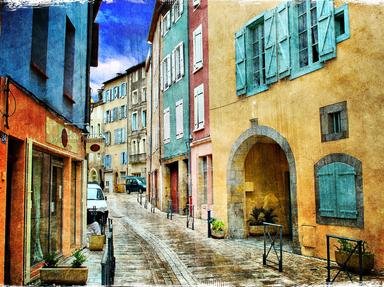Quiz Answer Key and Fun Facts
1. In the early 20th century, Abstract art emerged as a new way to represent things through the disassociation of matter. Known for his "Composition" series, who is generally considered to be the pioneer of the movement?
2. Claude Monet is famous for the many paintings of his gardens, but occasionally he would paint other things, such as seascapes and people. Which of these shaded women did he paint?
3. What German painter of Berlin society in the 1920s predicted the rise of Hitler and the Nazis in works like "The Agitator" and "The Pillars of Society"?
4. Better known for making "A Bigger Splash" in 1967, what English artist created an American landscape piece that was really a collage of over 700 photographs?
5. Which Romantic painter pleased Napoleon when he depicted French soldiers in Valhalla surrounded by floating maidens and the mythical poet Ossian?
6. Rembrandt made many paintings that were set indoors, such as "The Night Watch" and "Danae". But you might be able to find a distressed Biblical figure in his only maritime painting. What is it called?
7. The Judith story was a popular theme among painters of the Baroque period. Not to be confused with Caravaggio, what painter of "Judith Beheading Holofernes" was one of the first women to gain international recognition as a painter?
8. During World War II, Max Ernst created an unusual piece of art that illustrated his fears about the future. What was this masterpiece called?
9. One of the best-known American paintings features a woman in a pink dress lying on the grass of a farm and looking up at gray house. What is its name and who painted it?
10. In 1932, Diego Rivera's "Man at the Crossroads" was painted for a wealthy New Yorker. Due to its political message, the mural caused a major controversy and the man had it destroyed. What future Vice President was this?
Source: Author
skydude13579
This quiz was reviewed by FunTrivia editor
LadyCaitriona before going online.
Any errors found in FunTrivia content are routinely corrected through our feedback system.

